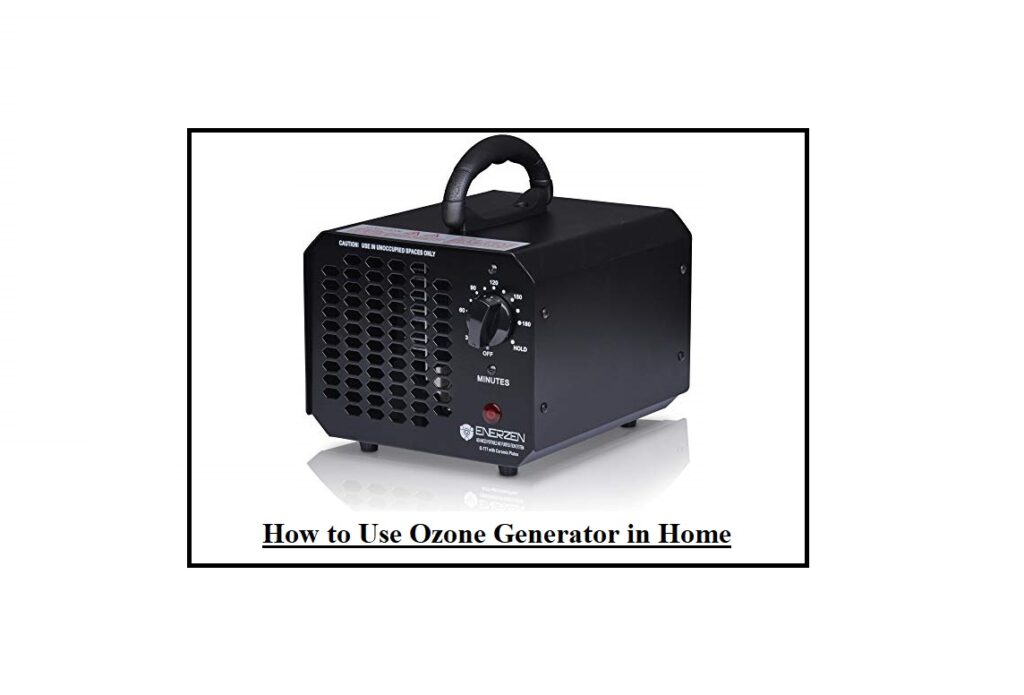How to Use Ozone Generator in Home – An ozone generator is an ozone-producing air cleaner. Its disinfectant properties were initially recognized in the early 1800s. Ozone was discovered to have a wide range of applications. Ozone generators are now utilized to eliminate odors and germs from rooms. It can also be used to purify water. Germs, viruses, bacteria, and other microbes are all potentially harmful. These hidden parasites will go to any extent to cause havoc in the body; they can even induce severe diseases that lead to death. This is why, in some cases, an ozone generator can be used in the home to eliminate them.
Find out everything you need to know about ozone generators at Linquip. Our goal at Linquip is to offer you a wide selection of the top ozone generators available. To learn more about what Linquip offers in terms of filtration equipment and parts, please visit Linquip’s “Filtration Equipment and Parts” page.
Are you looking for an ozone generator? Filtration Equipment Products are listed in a free database on Linquip’s website. Linquip makes it easy to send a request to different Filtration Equipment Suppliers and Companies to receive free quotes.
What Is an Ozone Machine and How Does It Work?
An ozone machine is a portable unit that can be used to remove indoor pollutants and odors in the home or the car. A compartment in the machine catches air in the form of CO2. The oxygen in the air is subsequently transformed into ozone by a lightning-like electrical discharge. Silent corona discharge is the name for this technique. The electrical discharge separates the oxygen into individual oxygen atoms, which then attach to other oxygen (O2) atoms to make ozone. UV radiation, which simulates how the sun’s UV radiation separates atoms of Oxygen (O2) into individual atoms, is a less effective approach.
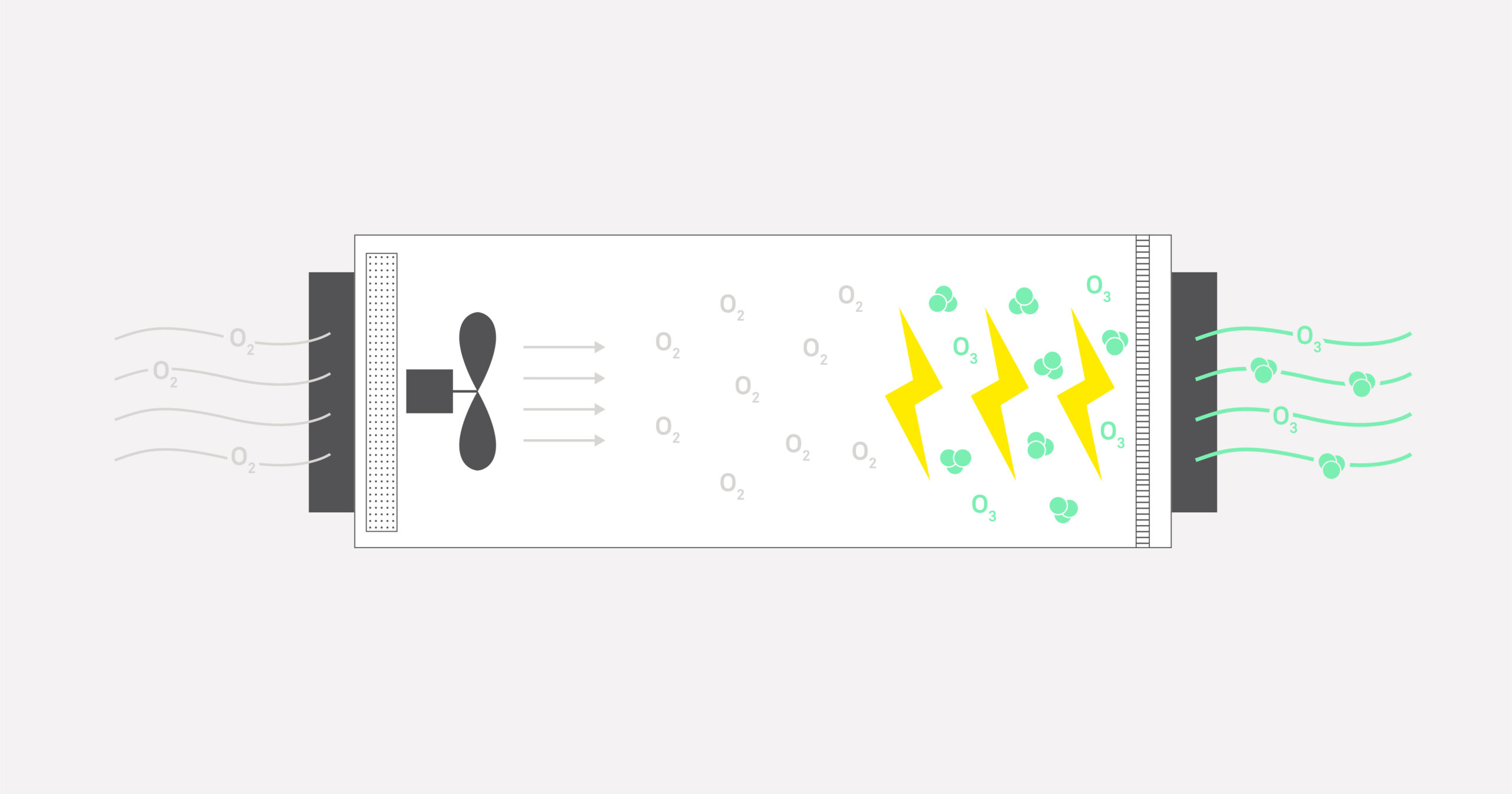
Ozone is a three-atom version (O3) of oxygen (O2). Because the third molecule in ozone can easily separate and attach itself to the chemical structure of microorganisms, it is useful in eradicating pollutants, viruses, bacteria, germs, and odor. As a result, they are rendered ineffective. Without anyone in the room, the ozone machine is normally turned on and let run for a while. After the ozone has done its job, the room must be opened and the air allowed to depart.
Ozone Generator Dangers
The usage of ozone generators should be with prudence. Although they are deemed safe in industrial and medical settings where high safety requirements must be followed, they are dangerous to human health when used at home in case the amount of ozone needed to kill viruses and bacteria surpasses current public health guidelines.
For example, eliminating mold in the house will necessitate a very high ozone production. As a result, it should be used in residential residences with caution or not at all. When people are exposed to ozone, they might develop a variety of respiratory problems. The same properties of ozone that allow it to easily react with organic molecules to generate odor and pollution also allow it to react with organic materials in the body to cause havoc.
Throat and lung irritation, asthma, cough, chest pain, shortness of breath, eye and nose irritation, and increased susceptibility to respiratory infection are some of the problems that can develop. Children, asthmatics, and the elderly may be especially vulnerable to the effects. It can also have an impact on pets. Inhaling ozone can harm the immune system and make it less effective in fighting respiratory illnesses. While those who are exposed to modest levels of ozone can recover rapidly, continuous ozone exposure can cause serious respiratory damage.
Plants in interior spaces can be affected by ozone, in addition to humans and pets. Ozone levels that are too high can create uneven patches in plants, darkly pigmented areas, reddening, or even the plant mortality. Synthetic carpets, foam cushions, plastics, furniture covers, rubber, textiles, electrical wire coatings, artwork, and other building elements can all be impacted by ozone levels.
Safety Ways to Use Ozone Generators in the House
With all discussed dangers of ozone generators, are there any safe ways to use them? The safest place to use ozone generators is in an empty environment. Before turning on the ozone machine, make sure there are no humans or animals in the house and that all indoor plants have been removed.
Ozone devices can be used safely at home in low concentrations at safe levels as specified by OSHA or the EPA in some cases. This covers smaller tasks such as cleaning the air for breathing, removing smoke from cooking, and clearing cigarette smoke. While the machine is in use, such a place can still be occupied. However, when a high ozone concentration is required, such as to eradicate mold in the home, this is not possible. Experts also advise avoiding using ozone devices in populated spaces at any concentration.
When utilizing an ozone generator, another safety precaution to remember is to cover or remove precious items before turning them on. Also, perform routine maintenance such as cleaning the collecting plate every 2–6 months to keep the machine in a usable and safe condition. Also, avoid using the generator in a high-humidity area. Arcing inside the ozone machine might be caused by moisture.
How Long Should You Run an Ozone Generator
The length of time an ozone generator must run is determined by the manufacturer’s specifications. Depending on the size of the space, it can take anywhere from 3 to 10 hours. If you’re disinfecting a complete house, it’ll take roughly 30 hours of continuous ozone production to remove the toxins.
How Long Does It Take for Ozone to Dissipate?
Before dissipating back into oxygen, ozone lasts 30 minutes to 4 hours in the air. Higher ozone concentrations may take 3–4 hours to evaporate, whereas lower levels may take less than 2 hours. It is recommended that you wait 4 hours after utilizing an ozone generator before returning to the room. That is after the door has been opened to let the gas out. After this period, humans and dogs can safely return to the residence. It should be noticed that the Ozone smell persists for a few days even after the toxic odor would have been gone.
To be safe, utilize an ozone machine with a shutdown timer, which allows the machine to be programmed to switch off when it has completed its task. If your machine does not come with time, cover your mouth and nose before entering the room to manually switch it off.
How to Use an Ozone Generator Properly
What should you do if you decide to utilize an ozone generator to eradicate mold, bacteria, or odor?
As we’ve already established, using ozone exposes your home to a potentially hazardous pollutant, so make sure everything is done correctly. In virtually all circumstances, it’s advisable to hire a professional cleaning and odor-removal firm that also offers ozone generators. These skilled specialists have been fully trained and have the knowledge and abilities necessary to finish the ozone process safely and efficiently.

If you’re going to use ozone to get rid of an odor, start by getting rid of the source of the stink and cleaning it as thoroughly as possible. Using safe liquid cleansers, wiping surfaces, cleaning carpets, and dusting should all be part of this.
All of these steps will assist to improve the odor removal process, and you may find that ozone treatment is no longer necessary after a thorough cleaning.
It is normally preferable to rent an ozone generator, although you can buy one for personal use. However, you should never be in the room when it is running.
If you operate a hotel, several rental units, or a business with strong aromas (such as a restaurant or a pet-related service), an ozone generator can be a good investment. If you are a homeowner, though, it is usually best to merely rent because you will not need it regularly and will want to use it as little as possible.
Every ozone generator is different, so if you’re using one for the first time, make sure to read the directions carefully. Close all of the windows in the house and turn on the ozone generator according to the instructions. After that, you’ll need to leave the area and let the ozone do its job. Many units have a timer and will switch off after a certain amount of time. Allow the ozone to disperse entirely before entering the home or room after the period has ended. This could take a few hours, so be patient and allow enough time. It’s the equivalent of using chemicals to get rid of bugs in your house. Any contact should be avoided.
Here are a few cleaning suggestions to help you get the job done faster:
- To allow for improved ozone circulation, use a low-speed fan or keep your A/C going.
- Running the air conditioner can also aid in the removal of mold and mildew from the ducts.
- Rather than a 12-hour ozone elimination marathon, consider a few brief times to progressively erode the odor or mold.
- Ensure that everyone, including dogs, is relocated from the house during treatment.
You may operate an ozone generator in your house more safely if you follow these guidelines. There are, however, safer, more dependable alternatives that clean the air without putting your health and welfare in danger.
While ozone generators have their purpose, real HEPA and activated carbon filters in room air purifiers can often achieve the same results.
How is Ozone Air Purifiers Different from Other Purifiers?
All of this raises an important question. What distinguishes ozone generators from other air purifiers?
In truth, the disparities are enormous. Air purifiers, for the most part, do not emit pollution into the atmosphere. Air purifiers just filter the air, whereas ozone generators emit toxic gas to clean and sanitize.
An air purifier with a charcoal filter, for example, will draw in air and move it across the filtering surface. Before the air is returned to the room, the filter captures pollutants, allergies, and other things. There is a significant difference between air purifiers and ozone generators in this regard. One emits a cleaning agent, while the other merely removes impurities from the air.
Another significant distinction is that with an ozone generator, the actual cleaning occurs when ozone comes into contact with another substance outside of the unit. When contaminants are captured by the filter of an air purifier, the cleaning takes place inside the machine.
Best Ozone Alternatives
- EJ120 Air Purifier
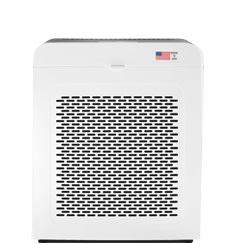
This quiet, effective air purifier features a medical-grade HEPA filter that removes up to 99.99 percent of all airborne allergens and particles, providing ozone-free fresh air. This purifier is extremely good at removing smoke odors from a home, and it can be used in big single rooms with notable benefits.
- Erik 650A Air Purifier
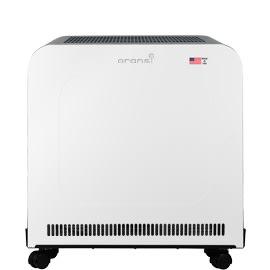
This high-tech air filter exceeds HEPA filtration requirements. It boasts the highest level of filtration available on the market and helps your home or office smell fresh and clean thanks to a patented design. It may be used to remove odors from a variety of causes, including smoking and dogs, and can even be used to treat mold.
- Max HEPA Air Purifier
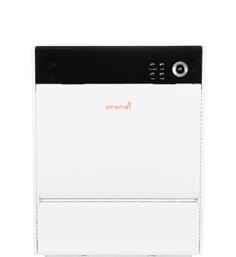
This HEPA filter air purifier removes a variety of impurities, including mold spores and other airborne particles, using an activated carbon filter. The activated carbon filter can also be used to eliminate minor odors and gases.
- Finn HEPA UV Air Purifier
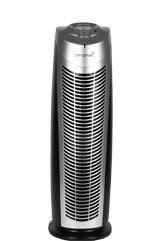
This stylish and practical purifier is ideal for bedrooms and offices. Using HEPA UV-C technology, this HEPA air cleaner aggressively eliminates mold spores from the air. This filter uses UV light to eliminate germs and mold spores, resulting in cleaner, healthier air.
How Effective Are Ozone Generators?
Manufacturers’ Claims
Ozone’s highly reactive nature, according to manufacturers, allows it to rapidly bond with pollution, particularly odorous chemicals like smoke and organic stuff like viruses, bacteria, and mold spores. These statements, however, are not supported by scientific evidence.
Performance Against Mold and Bacteria
Ozone generators were proven to be ineffective at stopping mold or bacteria growth in a regular hospital room and would require dangerous levels of ozone to accomplish so (Dyas, Boughton, & Das, 1983). Public health departments advise against utilizing ozone generators for mold cleanup, claiming that even at high levels, ozone cannot control mold.
Performance Against VOCs
If ozone gas is effective at anything, it should also be effective at other gaseous pollutants (particularly volatile organic compounds, or VOCs), right? In certain circumstances, it might not, unless you wait thousands of years. In a study published in 1995 (Boeniger, 1995), researchers looked at how long it would take to eliminate 14 of the most prevalent organic molecules found in the air.
It was discovered that breaking down six of these contaminants to half their initial concentrations would take 880 years or more at ozone concentrations of 100 ppb (half-lives). Formaldehyde would take almost 4,400 years to decompose! Only styrene, a pollutant with a half-life of around 4 hours, was discovered.
Performance Against Particulates
It’s important to realize that ozone generators don’t remove particle debris from the air, such as dust or pollen (both of which are common allergens).
The EPA’s Conclusion About Effectiveness
According to the EPA, ozone is not particularly effective at removing indoor air contaminants at concentrations that meet public health standards, based on a review of scientific evidence.
Are Ozone Generators Safe to Use?
There have been studies that show the dangers of inhaling too much ozone. And they are correct. It’s unhealthy to have too much in your lungs. However, there are safe ways to use ozone devices so that you can receive the benefits.
Precautions
It’s critical to understand the potential dangers and the actions to take. Ozone generators should not be used around pets, small children, or people who have respiratory difficulties. Ozone in high concentrations can irritate the lungs.
As a result, if you use an ozone machine at home, you should close off the area and leave the room. It’s advisable to go to another place to stay overnight if you need to clean the entire house.
Is it Safe?
In the end, the safety of ozone generators is determined by how they are used. And if you select the appropriate generator for your needs.
You can keep safe by leaving the area during treatment or until the ozone levels have returned to normal. The way you use it, as with most instruments, determines its safety. Visit here to learn how to use an ozone generator in the home properly.
More Information
Getting rid of scents seems insurmountable at times. You can achieve clean, pure air with the correct gear, though. Look through our selection of ozone generators and other gas detection tools to find the right one for you.
A video for the Correct Use of an Ozone Generator
Watch this video to learn how to use an ozone generator.
FAQs about the Use of Ozone Generator
- Are ozone generators allowed in apartments?
It is safe to use ozone devices at home as long as they are maintained at safe levels as determined by OSHA or the EPA. The scope of this includes a wide variety of tasks, including purifying the air, removing cooking smoke, as well as clearing cigarette smoke from the environment. It is still possible to occupy such a place while the machine is in use.
- How much electricity does an ozone generator consume?
The energy consumption per kilo of ozone produced is less than 7 kW.
- Is it harmful to stay in a room where an ozone generator is running?
Short-term exposure (minutes or hours) to high ozone levels can cause itching and burning of the eyes, nose, and throat, a feeling of being short of breath, as well as chest pain and coughing in adults and children. Asthma symptoms can be exacerbated by high levels of ozone in the air.
- What is the best place for an ozone generator in a room?
The ozone generator should be placed on a table or chair at the center of the home with additional fans operating in order to circulate the ozone. Start the ozone machine and leave the area being treated for the prescribed amount of time on the ozone generator’s timer.
- How does an ozone generator benefit your health?
By destroying fungi, bacteria, and viruses, ozone can strengthen the immune system, stimulate white blood cells, and prevent the occurrence of infections and deficiency of the immune system. In addition, it prevents some types of cancer by counteracting mutations in cells.
Conclusion
The disadvantages of ozone generators exceed any potential benefits, and it is preferable to look for safer and more effective ways to improve your indoor air quality. Ozone generator manufacturers frequently make deceptive claims regarding their products, claiming that they are efficient at odor reduction. Overall, these devices are heavily regulated by federal law, and the Environmental Protection Agency (EPA) and other federal organizations such as the Air Resources Board (ARB) have issued warnings about their health risks.
In general, unless they produce exceptionally high levels of ozone, there is no scientific evidence that ozone generators are beneficial. In the end, there are far more effective and safe solutions to air quality issues. Various approaches, such as source control, ventilation, and the use of other air purifier alternatives, can offer a safe area with clean, fresh air for you and your family.
Download PDF for the Correct Use of an Ozone Generator
This article on the correct use of an ozone generator can be downloaded as a PDF file if you wish to refer to it later.
linquip.com-How to Use Ozone Generator in Home Best Solution in 2023
Buy Equipment or Ask for a Service
By using Linquip RFQ Service, you can expect to receive quotations from various suppliers across multiple industries and regions.
Click Here to Request a Quotation From Suppliers and Service Providers
Read More on Linquip
- How Long to Wait After Using Ozone Generator
- Working Principle of Diesel Generator
- What is an Induction Generator? An Ultimate Guide
- The Biogas Generator: A New Approach to the Future of Fuels and Energy
- The 10 Best Ozone Generators
- Electric Generator Maintenance, Repair and Services
- Gasoline Generator Repair and Maintenance
- How Much Does It Cost to Install a 22kW Generac Generator?
- How Long Can A Standby Generator Run Continuously?
- How to Connect a Generator to Your Home? (Best Guide)
- What is Power System? Definition & Types
- Diesel Generator Set
- Caterpillar Heavy Duty Diesel Engine Products

